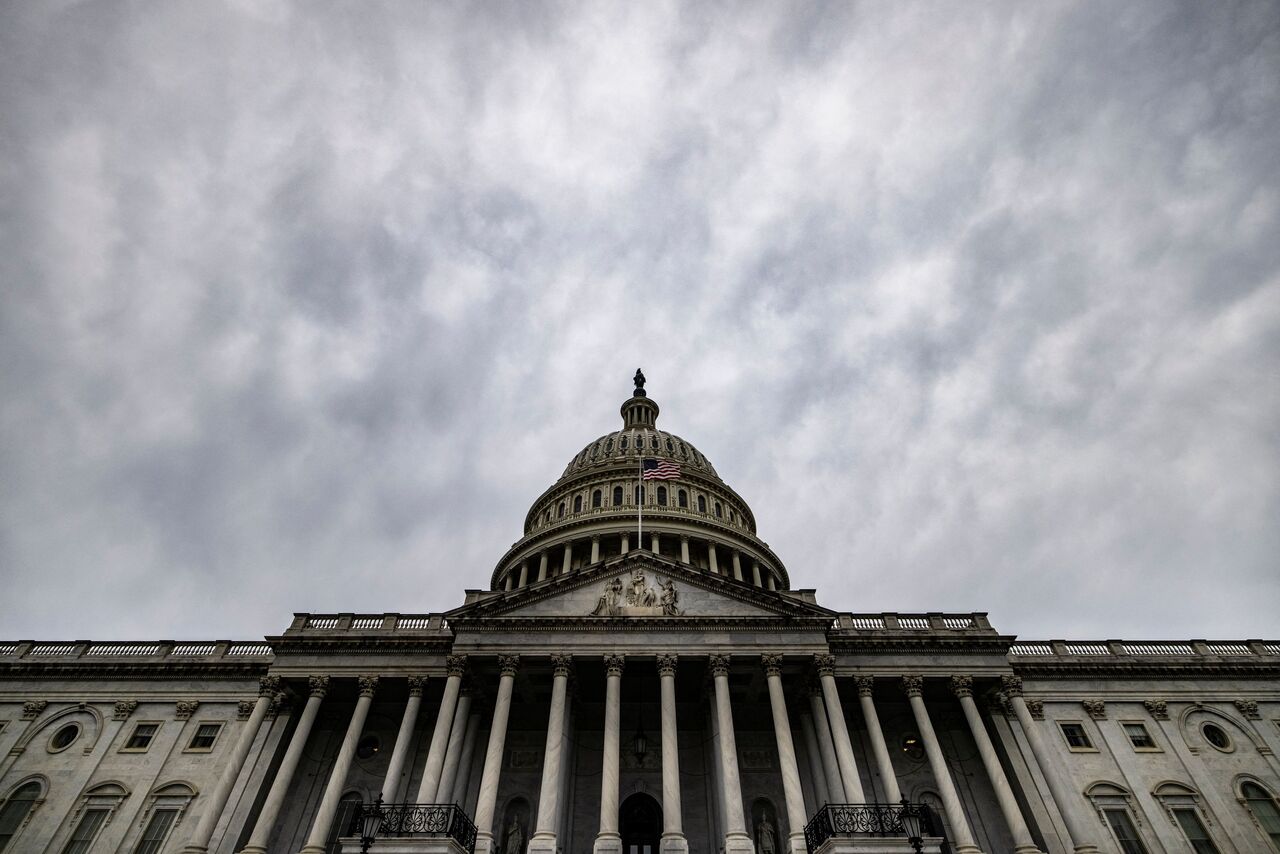Explainer: Why the US govt may shut down and what the debt ceiling crisis is all about
Sign up now: Get ST's newsletters delivered to your inbox

There have been 14 government shutdowns in the US since 1981.
PHOTO: AFP
Follow topic:
WASHINGTON (REUTERS, BLOOMBERG) - A partial shutdown of the US government looms this week, as politicians battle over its funding.
Funding for most federal agencies in the United States is set to expire at midnight on Thursday (Sept 30), US time.
Unless Democrats and Republicans arrive at an agreement in time over whether to lift a debt ceiling - the limit that the US government can borrow - the operations of these federal agencies will come to a grinding halt when their funds expire.
It would be the United States' second government shutdown in three years.
The debate over the debt ceiling comes as the US government risks hitting its US$28.4 trillion (S$38.7 trillion) borrowing limit around Oct 18.
Exceeding the limit could trigger a historic default and long-lasting economic fallout.
The issue is a regular topic of partisan rancour in Washington. The debt ceiling has been raised about 80 times since the 1960s.
What government functions will be affected in the case of a shutdown?
Non-essential government functions such as tax audits, oversight of financial swap markets and investigations of workplace civil-rights complaints are among activities expected to stop.
Economic reports from the Labour and Commerce departments could be delayed.
Museums and national parks will close, and roughly three in five workers - out of a federal civilian workforce of 2.1 million - will be barred from working.
Furloughs could hit 62 per cent of employees at the US Centres for Disease Control (CDC), the agency at the centre of the US fight against Covid-19, according to an agency shutdown plan.
Which functions would remain unaffected?
Military operations, air traffic control, medical care of veterans and federal criminal investigations are among the essential activities that will go on. The US Postal Service and US Federal Reserve have their own funding streams and so will also be largely unaffected.
How does a shutdown take effect?
After funding expires, some workers can clock in briefly to set department shutdowns in motion.
Much of the government would continue on autopilot, including mailing Social Security pension checks and paying hospital bills for the elderly. Soldiers can still fight wars, but many civilians in the Department of Defence will be furloughed.
Eventually, essential services will still suffer.
How many times has this happened in the past?
There have been 14 government shutdowns in the US since 1981, ranging in duration from a single day to a 35-day shutdown in 2018-2019.
How can a shutdown be avoided? How does the debt ceiling feature in the debate?
The Congress must pass a spending Bill that will keep the federal agencies afloat, preventing the government from shutting down, or to reopen it.
Democrats in the House of Representatives last week passed a Bill that would renew government funding, but it included raising the cap on federal borrowing.
Republicans object to increasing the debt limit, and they have blocked a Democratic effort to approve a 14-month suspension together with a temporary budget.
One way to end the impasse would be for Democrats to drop the debt ceiling measure from the funding legislation. It would then have to be passed swiftly by both chambers of Congress to avert a shutdown.
Alternatively, the Republicans could also place a standalone continuing resolution without the debt limit provision.
Democrats could also present a standalone debt limit increase as a gamble that there would then be so much pressure on Republicans to go along that they either vote for the Bill or decline to "filibuster" it in the Senate.
The latter would allow the Bill to pass by a simple majority of 48 Democrats, two independents and a tie-breaking vote by Vice-President Kamala Harris.
What about budget reconciliation?
Budget reconciliation is a manoeuvre that bypasses the normal Senate requirement of 60 votes to advance a Bill.
It is the technique that the chamber's top Republican Mitch McConnell used to pass a sweeping tax-cut Bill skewed to the wealthy when his party controlled the Senate in 2017.
Now in the minority, he wants Democrats to use this to address the debt so that no Republicans have to vote for, and take responsibility for, a debt limit increase even though they want one.
But it's complicated.
Democrats could try to tuck language on the debt ceiling into Mr Biden's sweeping US$3.5 trillion social spending Bill. But the party is deeply divided on that Bill and it is not clear that moderates and progressives can agree on a compromise package in time to avert a default.
Another option would be to write a reconciliation Bill focused on just the debt ceiling. That is also time-consuming as Bills trigger a much-despised process called a "vote-a-rama" with the potential for hundreds of amendments. The Senate has held multiple all-night sessions of that kind over the past year.
A stand-alone debt ceiling increase using the reconciliation process would likely have to be approved by the Senate parliamentarian since there are tight controls on its use.
Meanwhile, the Bipartisan Policy Centre now estimates that the Treasury Department will fully exhaust its borrowing capability sometime between Oct 15 and mid-November. Unless Congress acts in time, the US government will likely lapse into default.

